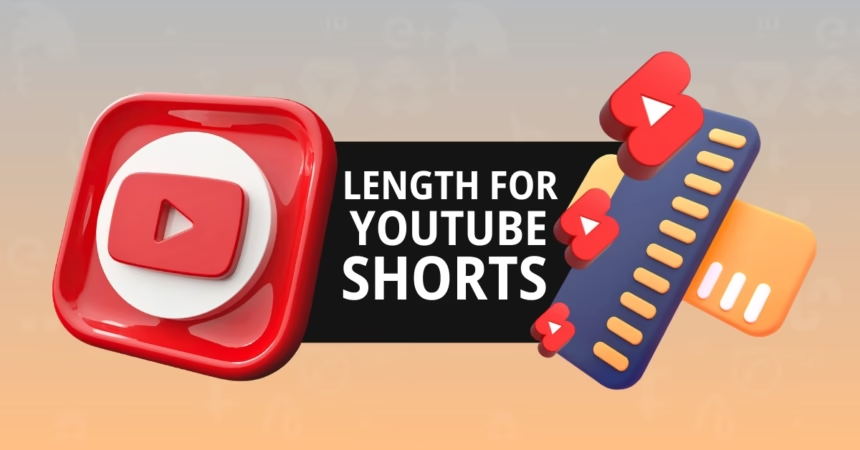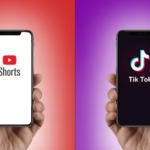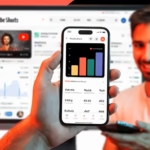Want more views without guessing? YouTube now lets Shorts run up to 3 minutes, but most creators see more reach when they keep things brief. The simple truth: aim for 15 to 30 seconds for the highest chance of full watches and replays.
In this guide, you’ll get clear timing targets by content type, easy script templates, editing tips that boost retention, and a simple 7-day test to find the sweet spot for your channel. We’ll track a few simple metrics: completion rate, average view duration, average percentage viewed, and first 3-second hold. Keep it short, clear, and watchable.
Ideal YouTube Shorts Length in 2025: 15 to 30 Seconds Wins
Here’s the headline answer. The max length for YouTube Shorts is 3 minutes, but most viewers finish shorter videos. Completion rate drives reach, and Shorts longer than 1 minute often see a drop in finishes unless the story is tight and the pacing is fast.
Short videos, especially 15 to 30 seconds, get more people to the end. Replays push the average percentage viewed even higher, which helps the algorithm push your content to more people.
Rule of thumb: keep it tight unless the story truly needs more time.
How the Shorts algorithm favors completion and replays
The basics are simple:
- The algorithm boosts Shorts that people watch to the end. A high completion rate signals high satisfaction.
- Rewatches help too. If someone loops your Short, that session adds more watch time and often pushes APV over 100 percent.
- Metrics to watch: completion rate, average view duration in seconds, average percentage viewed, and swipe-away rate in the first 3 seconds.
- Shorter videos often help these numbers go up, since there’s less chance to lose attention.
Think of it like a sprint, not a marathon. If your Short gets people across the finish line, the system hands you a bigger crowd.
When to go longer: 45 to 180 seconds for stories and step-by-steps
Some content needs more room. Go longer when the payoff is worth the wait. Great cases include:
- Storytime with a twist, transformations, or progress updates
- Recipes, repairs, or tech how-tos where each step matters
- Product teardowns or before and after sequences
- Challenges with a reveal at the end
What must be true if you go long:
- Fast pacing, no dead air
- A strong hook in the first 2 seconds
- Clean chapters so people can track progress
- No filler, trim hard
If 3 minutes isn’t needed, trim to 45 to 60 seconds. Your completion rate will thank you.
Pick the Right Length for Your Video Type and Niche
Length should serve the idea, not the other way around. Start by mapping your content style to a target range, then stick to it for a series. Predictability helps your audience know what they get when they tap your profile.
A simple system: pick one target length per series. Keep shots, pacing, and script style consistent so your viewers develop a habit.
Recommended ranges by format: joke, tip, tutorial, story, product
Here are easy targets that work for most niches:
- Quick joke or reveal: 15 to 20 seconds. Punchline lands before the viewer thinks about swiping. Great for memes, reveals, or sight gags. Rewatches are common if the timing is tight.
- Single tip or fact: 20 to 30 seconds. Enough time to hook, give the tip, show a quick example, and tag a loop.
- Mini tutorial or recipe: 30 to 45 seconds. Show the outcome first, then fast cuts through steps. Keep steps concise and visual.
- Story with payoff: 45 to 60 seconds, sometimes up to 90 seconds. Use chapters, keep tension high, and pay it off cleanly.
- Product demo or before-after: 20 to 40 seconds. Start with the after, then show the one feature or step that makes it work.
Why these ranges help:
- Shorter lengths increase completion rate and reduce swipe-aways in the first seconds.
- Focused timelines remove filler, which reduces drop-offs in the middle.
- Clear structure supports replays, especially with a loop or tease at the end.
Hook-first script templates that fit 20, 30, and 45 seconds
Write the script first, then cut words until it fits. If you need more time, your story might belong in a 30 or 45 second frame.
- 20 seconds
- Hook (0 to 2s): Start on action or the result
- Setup (2 to 6s): One line on what’s happening
- Action (6 to 16s): The key steps, fast cuts
- Payoff (16 to 19s): The result or punchline
- Loop tag (19 to 20s): Repeat first shot or line
- 30 seconds
- Hook (0 to 2s): Big claim or visible result
- Promise (2 to 5s): What they’ll get by watching
- Steps 1 to 2 (5 to 18s): Show the moves
- Payoff (18 to 27s): Result, before-after, or reveal
- CTA or loop (27 to 30s): Quick ask or reset to start
- 45 seconds
- Hook (0 to 2s): Visual surprise or problem
- Why it matters (2 to 6s): One line on stakes
- Steps 1 to 3 (6 to 34s): Clear, tight chapters
- Payoff (34 to 42s): Result or lesson
- Tag or loop (42 to 45s): Tease or reset frame
Example: A 30 second kitchen hack Short could open with a cleaned pan, promise a 10 second method, show sprinkle, soak, wipe, then loop back to the messy pan.
Edit for Retention: Pacing, Cuts, and Looping
You win attention in the first two seconds. Keep the pace high and your message clear. Remove anything that slows the viewer.
Open strong in the first 2 seconds and cut the fluff
Simple wins you can do today:
- Start with action or the finished result, not an intro screen
- Use jump cuts every 1 to 2 seconds when needed to keep energy high
- Add on-screen text and captions so viewers can watch without sound
- Remove dead space, ums, and long pauses
- Put any subscribe or follow ask at the end, not the start
Think of every second as rent. If a shot doesn’t earn its place, cut it.
Create clean loops to boost rewatch rate and total watch time
Loops can double your watch time when done right. Design your loop before you shoot.
- End with the same visual or line you started with
- Use a cliffhanger or quick tease that makes people rewatch
- Keep music beats and captions aligned across the loop point
- Aim for 100 percent or higher average percentage viewed on strong loops
A simple loop tactic: Start with the after shot, explain the one move that got you there, end by zooming back to the same after shot.
Test and Measure: Find Your Channel’s Sweet Spot
You don’t need to guess. Use a short test to prove what works for your audience. Keep the topic and style consistent, then compare lengths. Wait 48 to 72 hours before judging a Short, since distribution can ramp after day one.
Simple 7-day test plan with 3 lengths and clear success metrics
Post 9 Shorts in a week. Keep the core idea the same, just cut different versions.
- Post 3 at 20 seconds, 3 at 30 seconds, 3 at 45 seconds
- Use the same hook, script beats, and visuals as much as possible
- Change only the speed, trims, and how much context you include
Track these metrics:
- Completion rate
- Average view duration (AVD, in seconds)
- Average percentage viewed (APV)
- First 3-second hold
- Rewatch rate
- Comments and shares
Pick a winner, then make your next 10 Shorts that length. Once you see a pattern, keep going until results flatten, then test again.
Read YouTube Analytics: retention curve, APV, and rewatch rate
Open your Short’s analytics and look for clear signals.
- Retention curve: Watch for sharp drops in the first seconds. If many people leave before 3 seconds, your hook isn’t clear or the first frame is weak.
- Average percentage viewed: 85 percent or higher is strong for non-loopers. If you loop, APV can exceed 100 percent.
- Rewatch rate: If APV is high and AVD is higher than your length, your loop works.
- Head-to-head cuts: If a 45 second cut beats a 30 second cut on APV and views, keep the longer one for that format.
Use small edits to fix weak spots. If the curve dips at 8 seconds, cut or speed up the section right before the dip.
Simple Metrics Glossary
| Metric | What it means | Good target |
|---|---|---|
| Completion rate | Percent of viewers who reached the end | 70 to 100 percent for 15 to 30 second Shorts |
| Average view duration | Average seconds watched per viewer | Matches or exceeds your length on strong loops |
| Average percentage viewed | Percent of your Short watched on average | 85 percent+ non-loop, 100 percent+ loops |
| First 3-second hold | Percent who stayed past 3 seconds | 70 percent+ |
| Rewatch rate | How many viewers watched more than once | Higher is better, often tied to loops |
Quick Length Targets by Niche
If you want a faster starting point, use these ballpark picks. Then test.
- Comedy and reveals: 15 to 20 seconds
- Tips, facts, or myths: 20 to 30 seconds
- Cooking, beauty, or DIY: 30 to 45 seconds
- Fitness cues or quick drills: 20 to 30 seconds
- Storytime or challenges: 45 to 60 seconds, up to 90 seconds if needed
- Tech how-tos or repairs: 45 to 90 seconds for clarity
- Product demos and comparisons: 20 to 40 seconds, start with the after
A Simple Content Workflow That Fits Your Target Length
Keep your production tight and consistent.
- Write the hook first. Ask, would I stop scrolling for this frame?
- Draft the script to the template length you chose.
- Cut words until it fits with room for pacing.
- Shoot with the opening shot and loop tag planned.
- Edit for pace. Remove half-second gaps, speed up pauses, tighten cuts.
- Add text and captions that match the spoken words.
- Export vertical 9:16, use clean thumbnails or the strongest frame.
A small change that helps a lot: record room tone or light background music to smooth jump cuts. Silence between lines creates friction that leads to swipes.
Common Mistakes That Kill Retention
Avoid these traps:
- Long intros or logo bumps at the start
- Explanations before showing the result
- One long static shot with no visual change
- Talking too slowly without visual support
- Asking for likes or follows before the payoff
- Cramming a 2 minute idea into 30 seconds without structure
Fix by showing the result first, then saying how you got there, then looping.
FAQ-style Quick Answers
- Can Shorts be 3 minutes? Yes, the current max is 3 minutes.
- Should my Shorts be 3 minutes? Only if the story needs it and your analytics prove high retention.
- Will longer Shorts hurt my reach? Not by default, but completion rate usually drops once you pass 60 seconds.
- What if my niche needs context? Use chapters, faster pacing, and 45 to 60 seconds. Show the result early.
Conclusion
Shorts can run up to 3 minutes, but for most creators the best bet is 15 to 30 seconds. Go longer only when the story needs it and your retention proves it. Here’s a simple plan: pick a target length for your series, use a hook-first script template, then run a 7-day test with 20, 30, and 45 second cuts. Publish, measure, refine. Your next Short is one tight edit away from a win.














